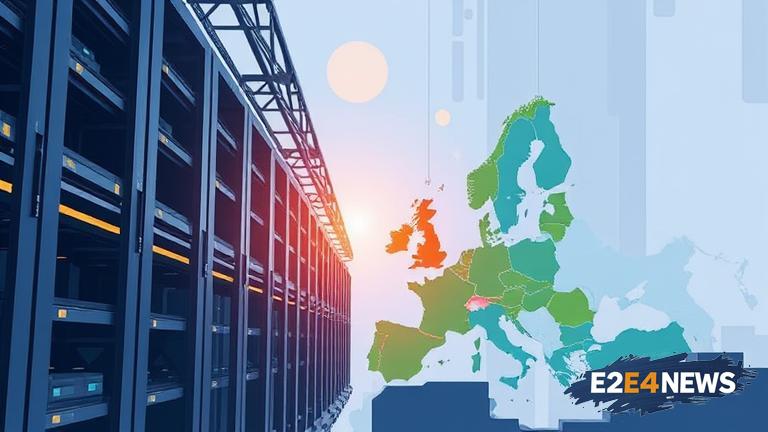In a bold move to breathe new life into Europe’s aging infrastructure, many of the continent’s outdated power plants are being transformed into state-of-the-art, AI-driven data centers. This innovative approach not only reduces the environmental impact of decommissioned power plants but also provides a unique opportunity for the region to bolster its digital capabilities. The conversion process involves a thorough renovation of the existing facilities, incorporating advanced technologies such as artificial intelligence, machine learning, and the Internet of Things (IoT). These AI-driven data centers are designed to provide high-performance computing, data storage, and analytics, catering to the growing demands of various industries, including finance, healthcare, and e-commerce. By leveraging the existing infrastructure, companies can significantly reduce their capital expenditures and operational costs. Moreover, the repurposed data centers can be powered by renewable energy sources, minimizing their carbon footprint and contributing to a more sustainable future. The European Union has been actively promoting the development of data centers, recognizing their crucial role in driving economic growth, innovation, and competitiveness. As the demand for data storage and processing continues to soar, the region is poised to become a hub for AI-driven data centers, attracting investments and creating new job opportunities. The transformation of aging power plants into data centers also highlights the potential for urban renewal and regeneration, as these facilities are often located in proximity to major cities. By revitalizing these areas, local communities can benefit from improved infrastructure, enhanced economic activity, and a reduced environmental impact. Furthermore, the integration of AI and machine learning technologies enables data centers to optimize their operations, predict maintenance needs, and improve overall efficiency. This, in turn, allows companies to focus on their core business activities, driving innovation and growth. The rise of AI-driven data centers in Europe is also expected to have a positive impact on the region’s cybersecurity landscape, as these facilities can provide advanced threat detection and mitigation capabilities. Additionally, the development of edge computing and 5G networks will further accelerate the adoption of AI-driven data centers, enabling faster data processing and reduced latency. As the European data center market continues to evolve, it is likely that we will see increased collaboration between industry players, governments, and regulatory bodies to establish common standards and best practices. This cooperation will be essential in addressing the challenges associated with data center development, such as energy consumption, water usage, and waste management. In conclusion, the transformation of Europe’s aging power plants into AI-driven data centers represents a significant step forward in the region’s digital transformation, offering a unique blend of innovation, sustainability, and economic growth. With its strong foundation in technology, favorable business environment, and commitment to sustainability, Europe is well-positioned to become a leader in the global data center market. As the industry continues to grow and mature, it is likely that we will see new opportunities emerge for companies, investors, and communities alike, driving progress and prosperity throughout the region. The future of Europe’s digital landscape looks promising, with AI-driven data centers playing a vital role in shaping the continent’s economic, social, and environmental destiny. By embracing this innovative approach, Europe can unlock new potential, drive growth, and cement its position as a hub for technological innovation and excellence. The region’s ability to adapt and evolve in response to changing market conditions, technological advancements, and environmental concerns will be crucial in determining the long-term success of its data center industry. As such, it is essential for stakeholders to remain committed to sustainability, innovation, and collaboration, ensuring that the benefits of AI-driven data centers are shared by all. In the years to come, we can expect to see further investments in AI-driven data centers, as well as the development of new technologies and business models that capitalize on the potential of these facilities. The rise of AI-driven data centers in Europe is a testament to the region’s ability to innovate, adapt, and thrive in a rapidly changing world, and it will be exciting to see how this industry continues to evolve and grow in the future.





